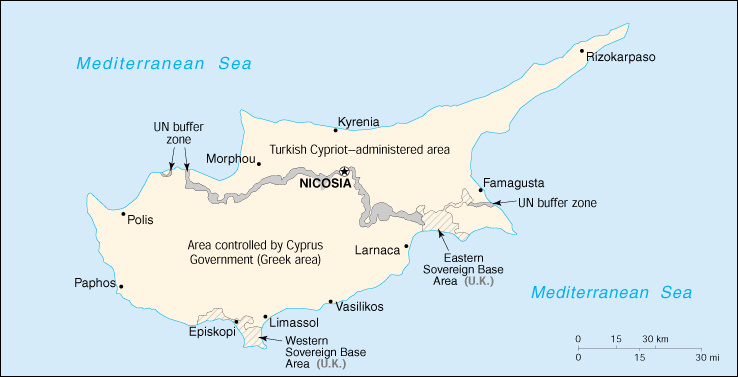
Status Quo Side: United Kingdom
Non-Status Quo Side: Cyprus
Region: Europe
Conflict Type: Colonial
Issues in Dispute: Ethnic, Independence
Maps: [Cyprus relief map] [Cyprus relief map (reduced size)]

British-occupied Cyprus contained two communities, the Greek Orthodox Christians (75%) and Turkish Muslims (18%), who lived for the most part in mutual cultural isolation. Greek-Cypriot pressures on Britain to permit "enosis" (union with Greece) increased markedly after 1950.
The Cypriot Patriarch, Archbishop Makarios III, directed political and military efforts designed to achieve enosis by provoking British repression and attracting UN attention. Greek sympathizers sent arms. The UN's failure to support self-determination, the transfer of the British Middle East Command from Suez to Cyprus, plus secret Greek encouragement, all underlay a decision by Greek-Cypriot leaders to begin hostilities.
Coordinated sabotage and violent demonstrations brought on a State of Emergency on November 26 1955. Greece, Turkey, and Britain failed to agree on ultimate sovereignty. Turkey and Turkish Cypriots demanding partition of the island between Greek and Turkish Cypriots grew more militant. In September 1958, Makarios, by changing the emphasis from self-determination to independence, paved the way for a 3-power agreement in principle.
Greece, Turkey and Britain agreed to become guarantors of independence without either enosis or partition. The Republic of Cyprus was established on August 16 1960.
Conflict continued between Greek and Turkish communities in Cyprus, and in the late 1990s UNFICYP remained in place. [See CYC]
Copyright © 1999 Lincoln P. Bloomfield and Allen Moulton